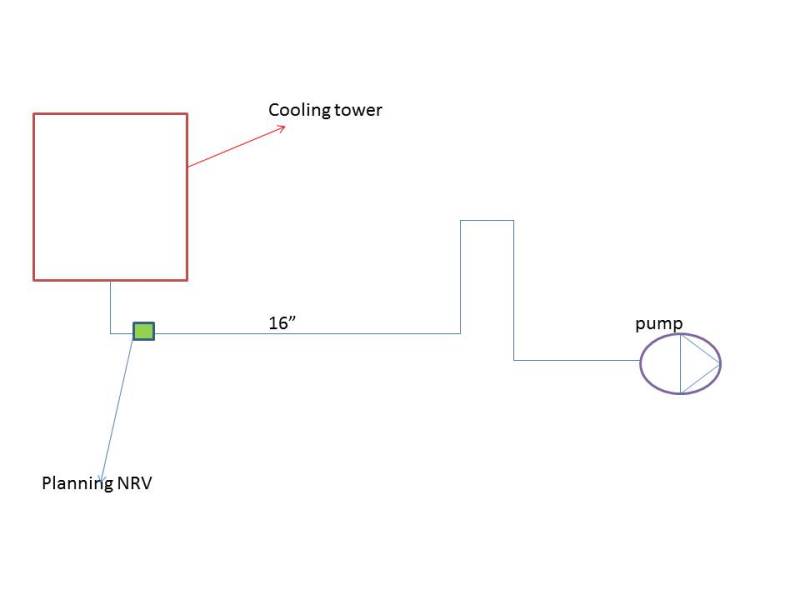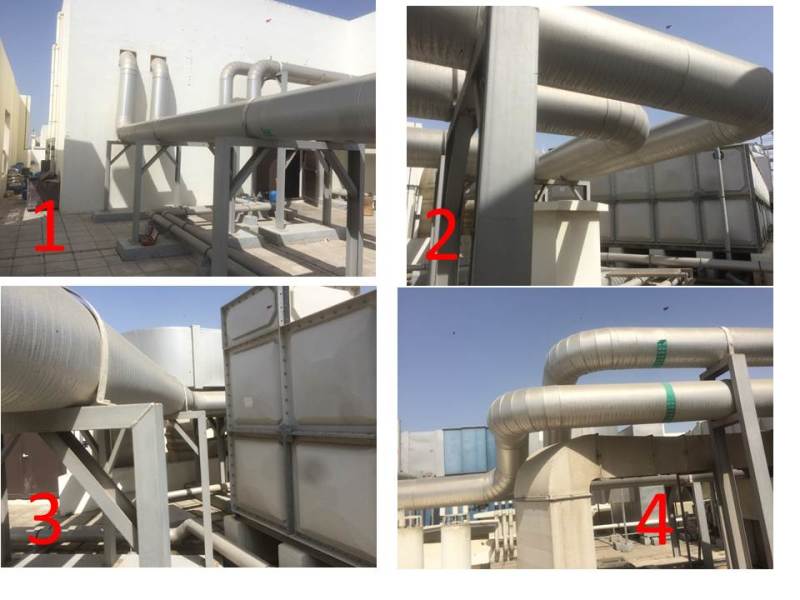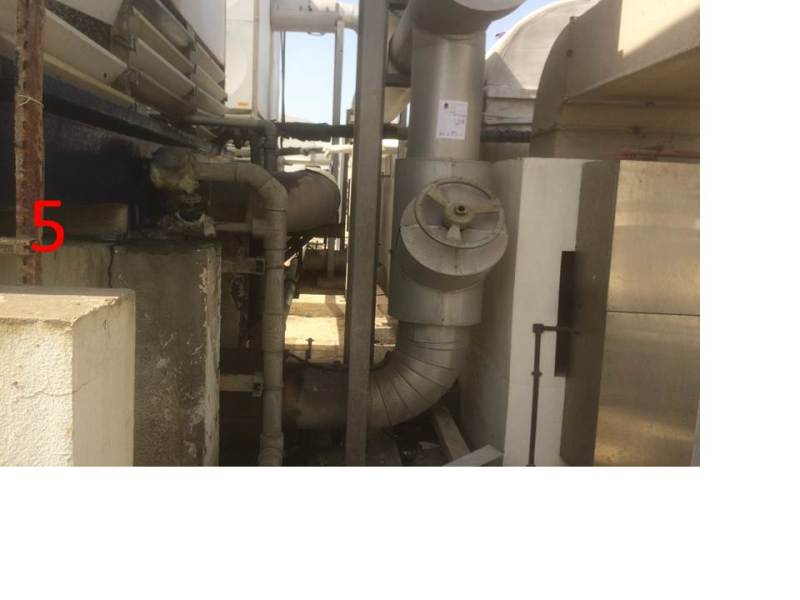moideen
Mechanical
- May 9, 2006
- 360
Air trapping through suction pipe when switch off the condenser pump. During switch off all water reurened to the cooling tower, Cannot be possible to change the piping configuration. Thinking an idea by fitting NRV closed to cooling tower outlet pipe to hold the water in suction pipe during the off period. Pipe size 16 inch. Any other suitable ideas…find the approximated sketch




